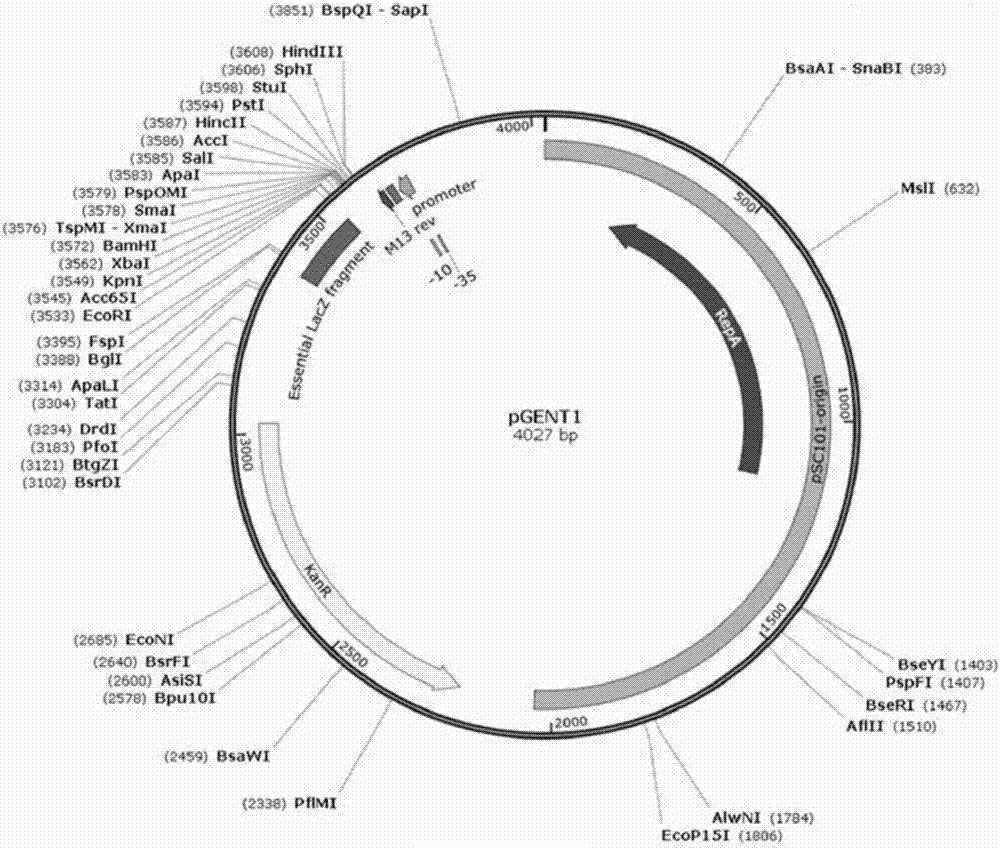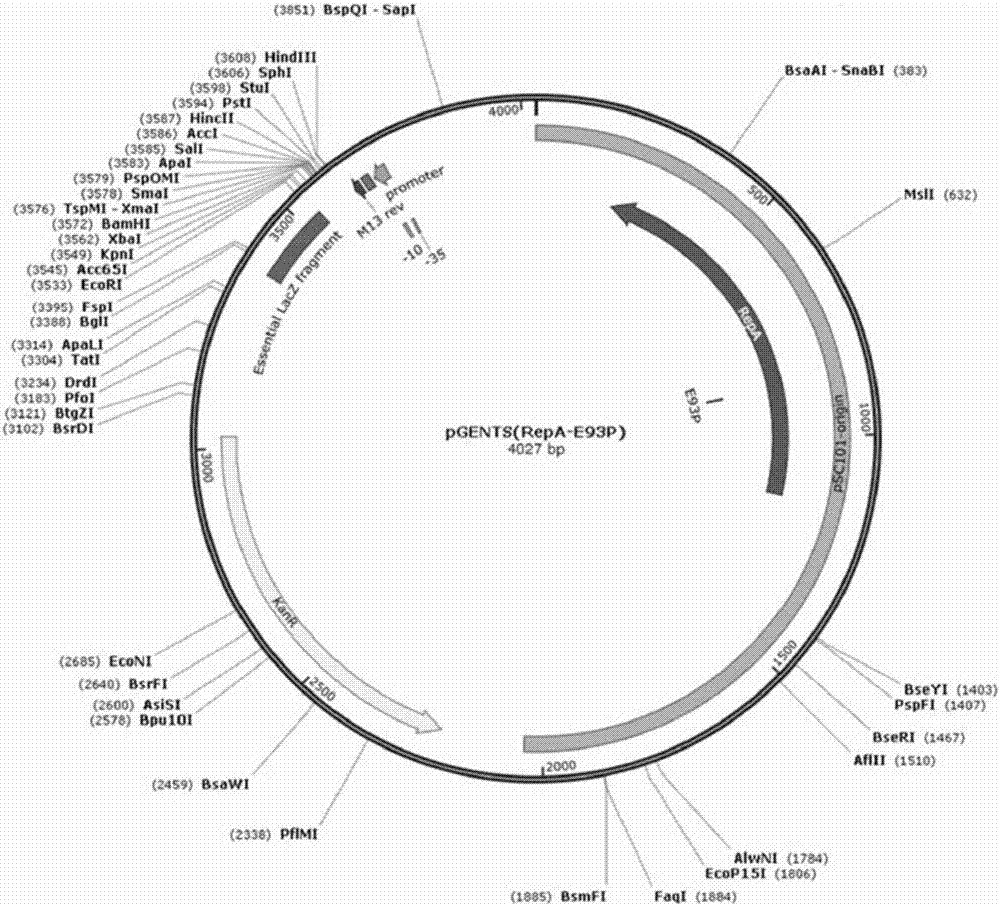Modified plasmid replicon and application thereof
A replicon and plasmid technology, applied in the field of bioengineering, can solve the problems of inability to express different genes, limit the diversity of plasmid construction, and the plasmids of the same type of high-copy replicons cannot exist at the same time. incompatible effects
- Summary
- Abstract
- Description
- Claims
- Application Information
AI Technical Summary
Problems solved by technology
Method used
Image
Examples
Embodiment 1
[0024] Example 1: In vitro transformation and screening of pSC101-RepA-E93P high-copy replicons
[0025] The purpose of this experiment is to obtain a high copy pSC101-RepA-E93P mutant. The steps are as follows:
[0026] 1) Sequence (SEQ ID NO.1) of the reported wild-type pSC101 replicon (Cohen et al.1973 Proc Natl Acad Sci USA; Cohen et al.1977J Bacteriol; Vocke C and Bastia D.1983Proc Natl Acad SciUSA) On the basis, the plasmid pGENT1 with the wild-type replicon was synthesized (it has the pSC101-RepA wild-type replicon, Kan resistance and LacZ selection markers, and its map is shown in figure 2 ; its sequence is shown in SEQ ID NO.3), the primers designed for the saturation mutation at the E93 position of RepA protein, wherein the F primer is: gtccactggaaaat nnn aaagcctttaaccaaaggattcctgatt; R primer is: attttccagtggacaaactatgccaagttctcaagcgaaaaatta, wherein n is a degenerate nucleotide selected from any one of a, c, t, and g. This primer was synthesized at GenScript C...
Embodiment 2
[0038] Example 2: Co-transformation of the plasmid pGENTS carrying the pSC101-RepA-E93P high-copy replicon and the plasmid pUC57 carrying the CorEI / pMB1 / pBR322 high-copy replicon
[0039] 1) Simultaneously transform pGENTS and pUC57 into Escherichia coli Top10, coat LB (Kan resistance + Amp resistance) plates, and culture overnight at 37°C.
[0040] 2) Pick a single clone from the transformation plate of Escherichia coli co-transformed with pGENTS and pUC57 plasmids, inoculate into LB liquid medium, and culture overnight at 37°C.
[0041] 3) From the culture in step 2), take 1ml of bacteria (OD 600 Equilibrate to ~1.5 to ensure that the amount of bacteria taken is the same), and use the Axygen (USA) plasmid mini-extraction kit to extract the plasmid.
[0042] 4) The plasmid obtained in step 3) was digested and linearized with EcoRI, and the ratio of pUC57 and pGENTS in E. coli was analyzed using an Agilent 2100 bioanalyzer.
[0043] Result: if Figure 5 As shown, both pGENT...
PUM
 Login to View More
Login to View More Abstract
Description
Claims
Application Information
 Login to View More
Login to View More - R&D
- Intellectual Property
- Life Sciences
- Materials
- Tech Scout
- Unparalleled Data Quality
- Higher Quality Content
- 60% Fewer Hallucinations
Browse by: Latest US Patents, China's latest patents, Technical Efficacy Thesaurus, Application Domain, Technology Topic, Popular Technical Reports.
© 2025 PatSnap. All rights reserved.Legal|Privacy policy|Modern Slavery Act Transparency Statement|Sitemap|About US| Contact US: help@patsnap.com



